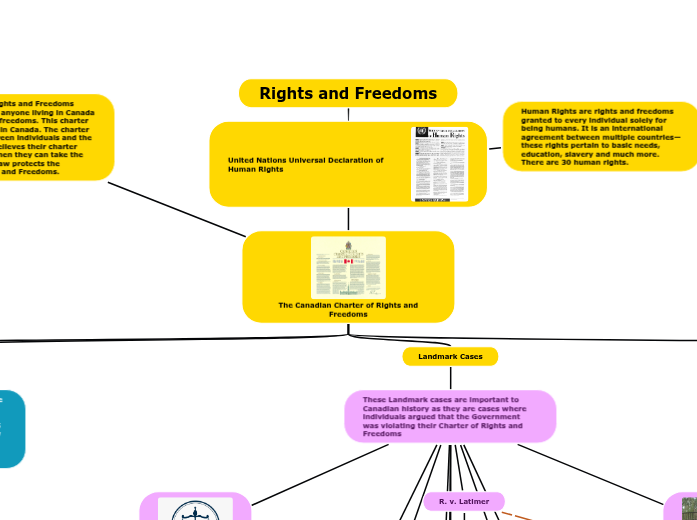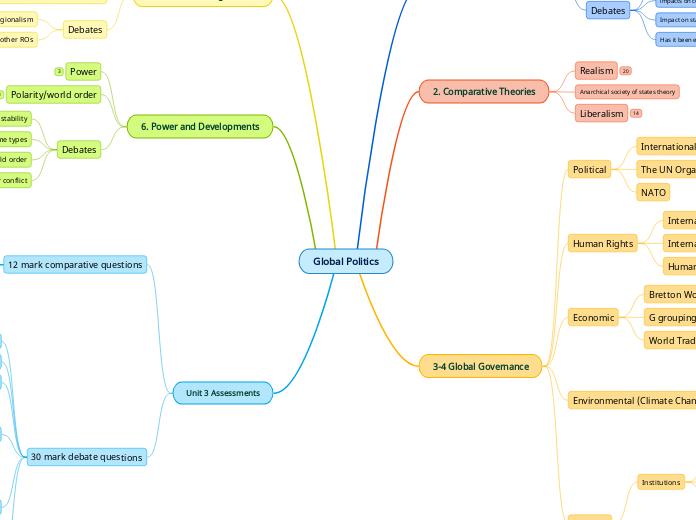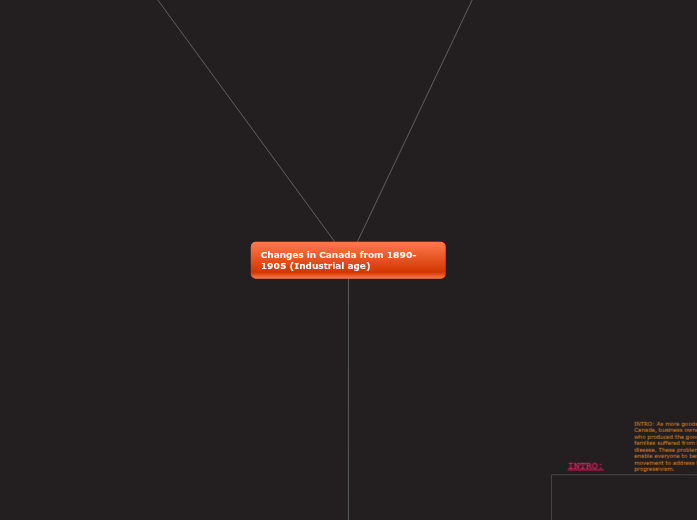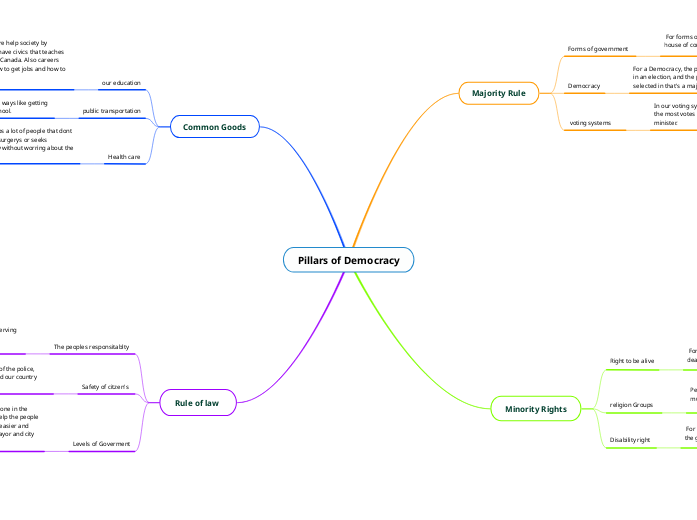Racism and discrimination against indigenous people has been going on for years. This fishing situation is just another way to push indigenous people out of their land and belittle them.
Keegstra comments were antisemitic and attacked those who identify as Jewish. The Jewish community is connected through their languages backgrounds and religions and can be identified as an ethnicity. Keegstra actions and comments was discrimination against Jewish individuals.
ALS can be recognized as a disability, and most of the people fighting for assisted suicide either suffered from this condition or had a family member who did. The refusal of assisted suicide affected this group the most.
Throughout history, abortion laws and laws regarding women's reproductive rights have been made with sexist views. This case allowed women to have easy access to safe abortions.
The oaks test is an idea of reasonable limits. Some cases will pass the oaks tests, whereas others will not, and it all depends on the reasonable limits regarding their charter rights.
Keegstra was spreading hate speech against the Jewish community. Although he argued that he has freedom of speech, it was decided it was not within reasonable limits as he was spreading hateful ideologies to his young students. He was fined with $5000. Hate speech is not protected within the charter.
The Canadian Charter of Rights and Freedoms grants every Canadian and anyone living in Canada a specific set of rights and freedoms. This charter applies to everyone that is in Canada. The charter governs relationships between individuals and the government. If someone believes their charter rights are being violated, then they can take the government to court. The law protects the Canadian Charter of Rights and Freedoms.
Video watched in class discussing The Canadian Charter of Rights and Freedoms: https://www.youtube.com/watch?v=YAIM1qzO9_w
Human Rights are rights and freedoms granted to every individual solely for being humans. It is an international agreement between multiple countries—these rights pertain to basic needs, education, slavery and much more. There are 30 human rights.
Video covered in class discussing Human rights: https://www.youthforhumanrights.org/what-are-human-rights/
Rights and Freedoms
United Nations Universal Declaration of Human Rights
The Canadian Charter of Rights and Freedoms
Prejudice and Discrimination Why we have The Canadian Charter of Rights and Freedoms
Equality rights are very important and its prejudice and discrimination that oppose against it. Prejudice is making prejudgments and generalizations about someone based on their sex, age, religion, cultural background, sexuality, race, and ethnicity. This lead to discrimination which is when one is treated differently based on all of those "isms". The Canadian Charter of Rights and Freedoms protects individuals from discrimination.
Disalbilty
Ethinicty
Religion
Backlash against Friday prayer accomadation at school
In Ontario, schools must make religious accommodations for their students. Many Muslim students attend Friday prayers during school, and so the school offers them a quiet space to pray. Many islamophobes had a problem with this and voiced their opinions clearly as they ripped pages from the Quran. This petition to end Friday prayers in school was discrimination against Muslims and their religion Islam.
Sexism
Race
The Central Park Five
The Central Park five case was a terrible injustice to the black community. Five teenage boys were arrested for the rape and assault of a white woman. Each of the boys spent up to 16 years in jail for a crime they did not commit. The investigators and police officers coerced the five teenagers into a confession. The five boys were charged without any DNA or physical evidence. These boys were charged because they were black and poor teenagers who were at the wrong place at the wrong time. Although this is not a Canadian case, it is a case where each of the suspect's rights and freedoms was violated.
Landmark Cases
These Landmark cases are important to Canadian history as they are cases where individuals argued that the Government was violating their Charter of Rights and Freedoms
Khadr. v. Canada
Khadr was a 15-year-old Canadian war criminal that was detained in Guatemala Bay by us officials. Khadr was tortured in this prison, along with being questions in cruel and unfair ways. Khadra went to the Canadian Supreme Court and said his right to life liberty and security was being violated along with his right to not suffer from cruel and usual treatment and punishment. Khadr won his case which was a very controversial ruling as Khadr did kill a US sergeant
R. v. Marshall
Marshall was an indigenous man who was charged with illegal fishing. Marshall took his case to the supreme court and argued that the Indigenous fishing treaty protects him and allows him to fish whenever he wants. The Supreme Court ruled with Marshal, and the charges were dropped. However, injustices continue to happen when indigenous people fish on their land.
This supreme court ruling was not effective as it did not prohibit future injustices like this one currently happening in Nova scotia: https://www.youtube.com/watch?v=E_pfElfGWTU
R. v. Keegstra
Keegstra was a highschool teacher who shared harmful ideologies about the Jewish community to his students. As these antisemitic comments were not made in private, Keegstra was charged, and when taken to court, Keegstra argues that his freedom of speech right was being violated. The supreme court ruled against Keegstra as he was expressing hate speech about a minority group while being a government worker.
R. v. Morgentaler
Abortions were illegal outside the walls of a hospital at the time. There were no hospitals that provided abortions in nova scotia, so Morgentaler set up abortion clinics to help women have easier access to them. Morgentaler argued that poorer women were unable to have safe and easy access to abortions and this would lead to having a child without being physically, emotionally and financially prepared which would lead to threatening the women's right to life liberty and security. The supreme court ruled with Morgentaler and abortion was made legal outside of hospitals.
R. v. Mann
Maan was stopped and questioned as he was walking near a crime scene, and the police officers believed he fit the criminal's description. They searched Maan and found marijuana and valium pills. Although they were looking for a weapon, Maan was charged with the intent of trafficking. Maan went to trial and argued that the officer had no reason to search him along with the fact that one of the officers put his hands in Maans clothing. It was argued that the officer's actions changed from ensuring safety to collecting evidence. The judge concluded that section 8 of his rights and freedoms were violated and he won his case.
Multani v.
Commission
scolaire
Marguerite-
Bourgeoys
Multani was a Sikh boy who attended school while wearing a kirpan (a religious piece that resembles a dagger). When the school was notified about what he wore every day as a part of his religion, they were willing to make accommodations, but when the board found out, they said prohibited from wearing it as their school code was against bringing weapons to school. Multani's father took his case to the supreme court and said his sons right to freedom of religion was being violated. They won their case and Multani continues to wear his Kirpan to school.
Carter v. Canada
A group of lawyers representing multiple people and Kay Carter's family rechallenged the supreme regarding assisted suicide. This time they won their case, and assisted suicide was made legal for adults suffering from medical conditions to seak out assisted suicide from medical professionals.
Rodriguez v.
British Columbia
Rodrigues suffered from ALS and wanted medically assisted suicide granted to her as she could not do it herself. She argued that she that her right to life liberty and security was being violated. Rodrigues stated that if she has the right to life, then she should have the right to end it. The Supreme Court decided against Rodrigues and assisted suicide/ euthanasia remained illegal. Rodrigues did commit suicide with the help of an anonymous doctor.
R. v. Latimer
Latimer murdered his daughter, who had ALS using carbon monoxide poisoning. Latimer did this as he was tired of watching his daughter suffer and wanted to put an end to it. He believes that she wanted to die, and that was not the life that she would have wanted. Latimer argued that this was in his rights as the charter states everyone has the right not to be subjected to cruel and unusual treatment or punishment. Latimer did not win his case and was sent to prison. However, to this day, he believes it was the right thing to do.
R. v . Oakes
David oaks was arrested with the possession of narcotic drugs. The courts proved the drugs were his and also charged him with the intent to traffic these drugs. However, Oakes said that it was not his job to prove that he was not going to sell these drugs as he should be innocent until proven guilty. He argued that it was the job of the crown to prove him guilty of trafficking. The supreme court agreed that his charter rights were being violated, so he won his case and was not charged with the intent to traffic
The Oaks Test
This test was created based on the R. v. Oakes case. This test is a series of questions to determine whether the government can override the charter rights with a law. The test uses fairness as they try to reduce infringement of charter rights while still being reasonable based off the crimes that were committed.
Nothwithstanding Clause
The Notwithstanding Clause is a part of the Canadian charter of rights and freedoms. This part states that laws can override the rights and freedoms in sections 2 and 7-15 for important reasons. Although a new law can conflict with the charter of rights and freedoms, this clause allows the government to do so anyways.
Reasonable Limits Clause
The Reasonable Limits Clause is a part of the Canadian Charter of Rights and Freedoms. This part of the Charter states that all of the rights and freedoms granted can only be protected and permissible to a certain extent/limit. Everyone has their rights and can exercise them at any time but only within a reasonable limit









